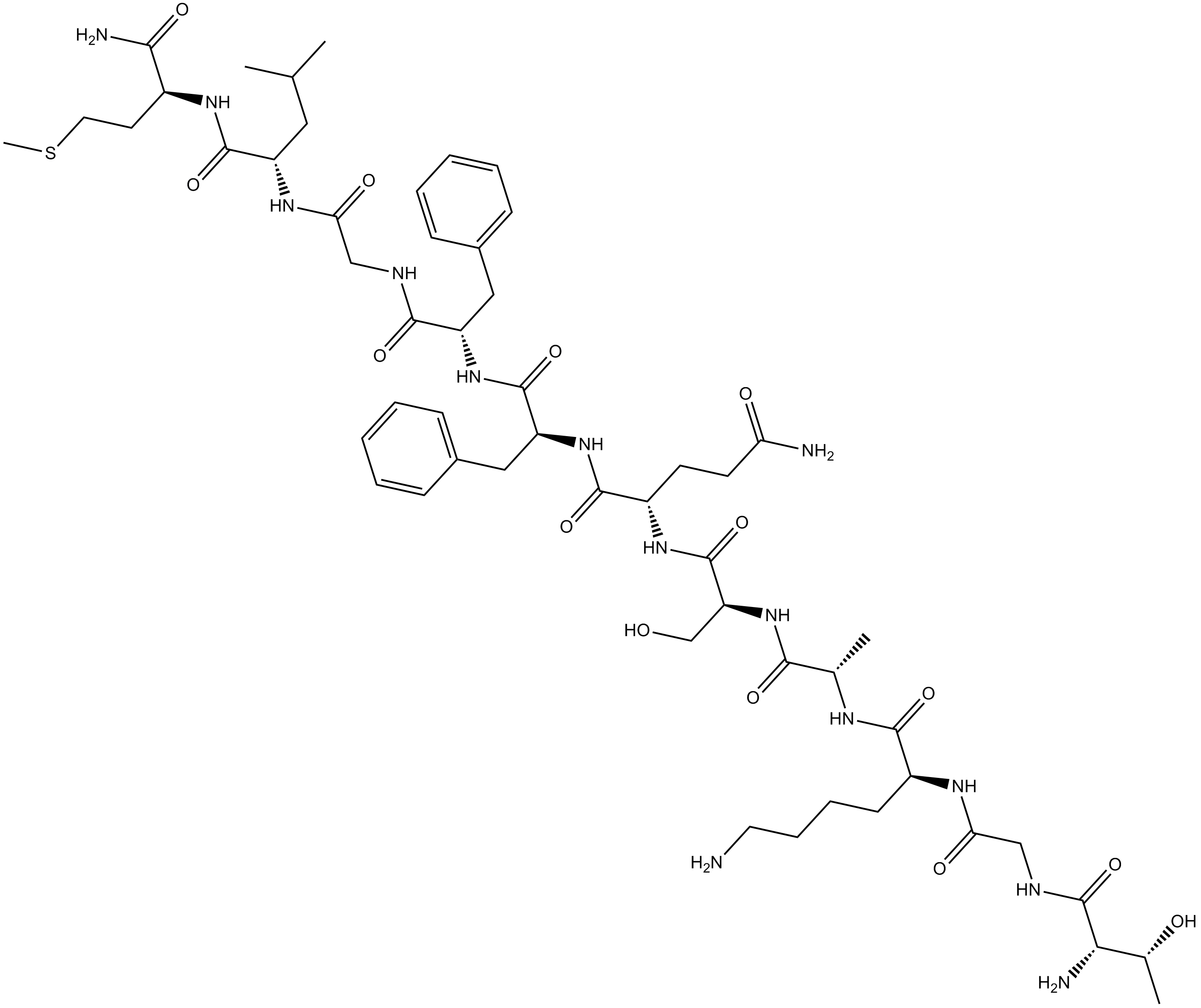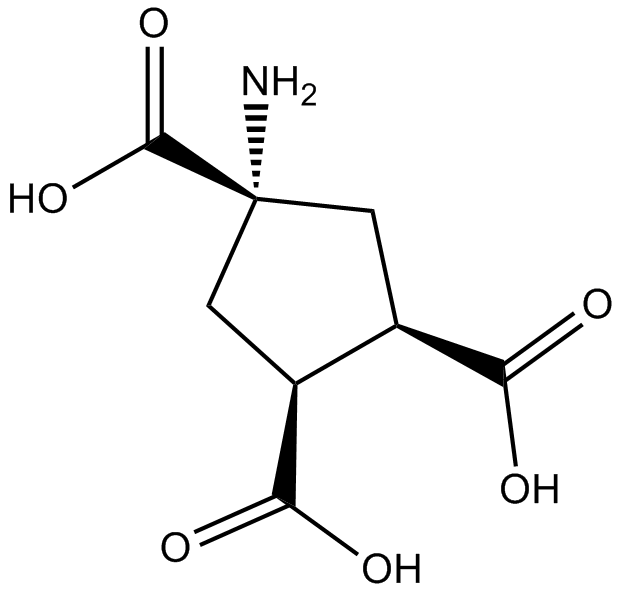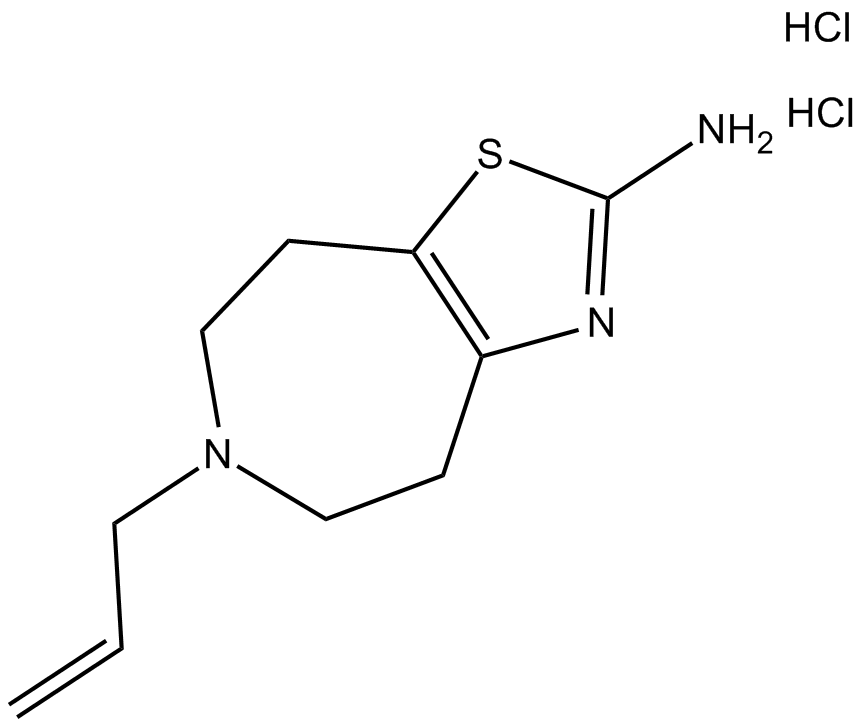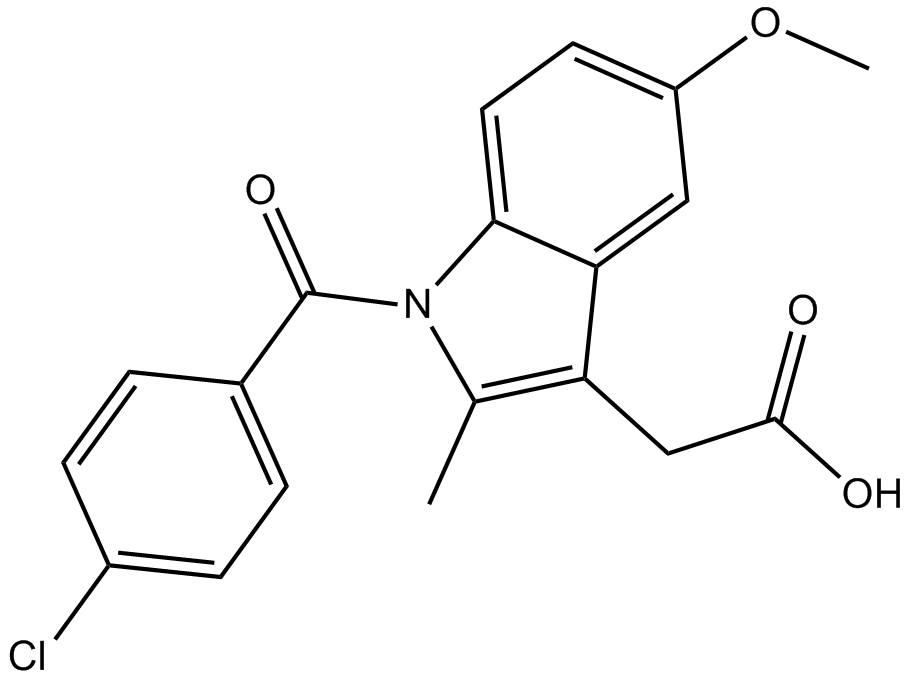Neuroscience

Neurotransmitter receptors function via various G-protein coupled and G-protein independent mechanisms that activate downstream intracellular signaling pathways such as cAMP/PKA, PI3K/AKT, phospholipase A2, and phospholipase C pathways. For instance, dopamine receptors act through adenylate cyclase to activate PKA and other signaling molecules, thereby mediate gene expression through the actions of CREB and other transcription factors. Other neurotransmitters such as NMDAR or AMPAR are associated with ion channels that control flux of Ca2+ and Na+, thus propagating the action potential across the post-synaptic neuron.
Dysfunctions in GABAergic/glutamatergic/serotonergic/dopaminergic pathways result in a broad range of neurological disorders such as chronic pain, neurodegenerative diseases, and insomnia, as well as mental disorders including schizophrenia, bipolar disorder, depression, and addiction.
-
 B5318 Hemokinin 1 (human)Summary: selective agonist at the tachykinin NK1 receptor
B5318 Hemokinin 1 (human)Summary: selective agonist at the tachykinin NK1 receptor -
 B5376 α-Conotoxin AuIBSummary: Selective antagonist of α3β4 nicotinic acetylcholine receptors
B5376 α-Conotoxin AuIBSummary: Selective antagonist of α3β4 nicotinic acetylcholine receptors -
 B5051 ACPT-ISummary: Agonist for group III mGlu receptors
B5051 ACPT-ISummary: Agonist for group III mGlu receptors -
 A3239 B-HT 920Summary: D2 receptor agonist
A3239 B-HT 920Summary: D2 receptor agonist -
 A8356 AcetylcysteineSummary: Antioxidant;mucolytic agent
A8356 AcetylcysteineSummary: Antioxidant;mucolytic agent -
 A8449 IndomethacinTarget: COXSummary: Cox inhibitor
A8449 IndomethacinTarget: COXSummary: Cox inhibitor -
 B5039 DCG IVSummary: highly potent agonist for group II mGlu receptors
B5039 DCG IVSummary: highly potent agonist for group II mGlu receptors -
 A1016 Ac-Endothelin-1 (16-21), humanSummary: ETA/ETB agonist,vasoconstrictor
A1016 Ac-Endothelin-1 (16-21), humanSummary: ETA/ETB agonist,vasoconstrictor -
 B1242 Haloperidol hydrochlorideSummary: Antipsychotic drug
B1242 Haloperidol hydrochlorideSummary: Antipsychotic drug -
 B1620 Tolterodine tartrateTarget: AChRSummary: Competitive muscarinic receptor antagonist
B1620 Tolterodine tartrateTarget: AChRSummary: Competitive muscarinic receptor antagonist

